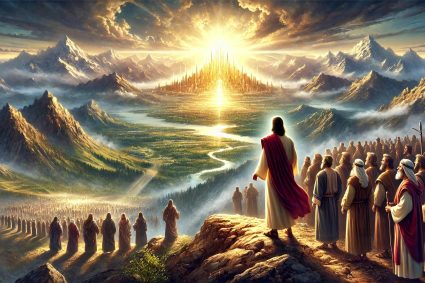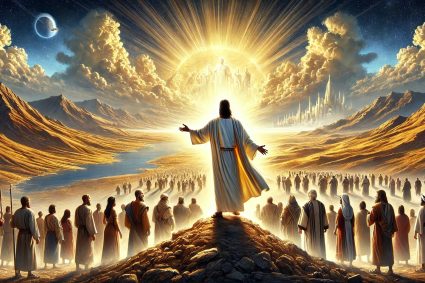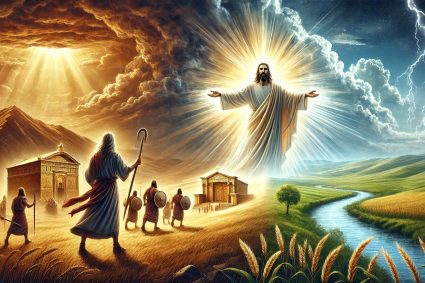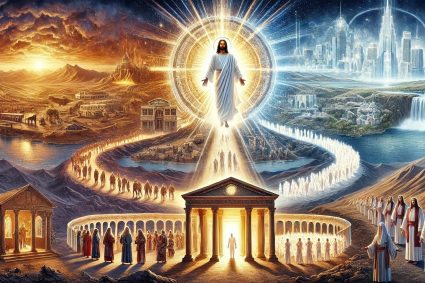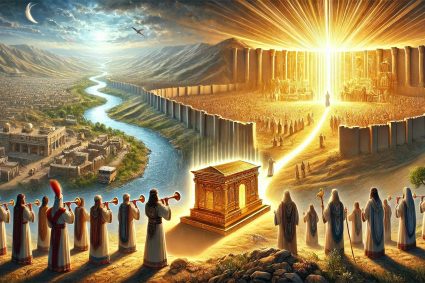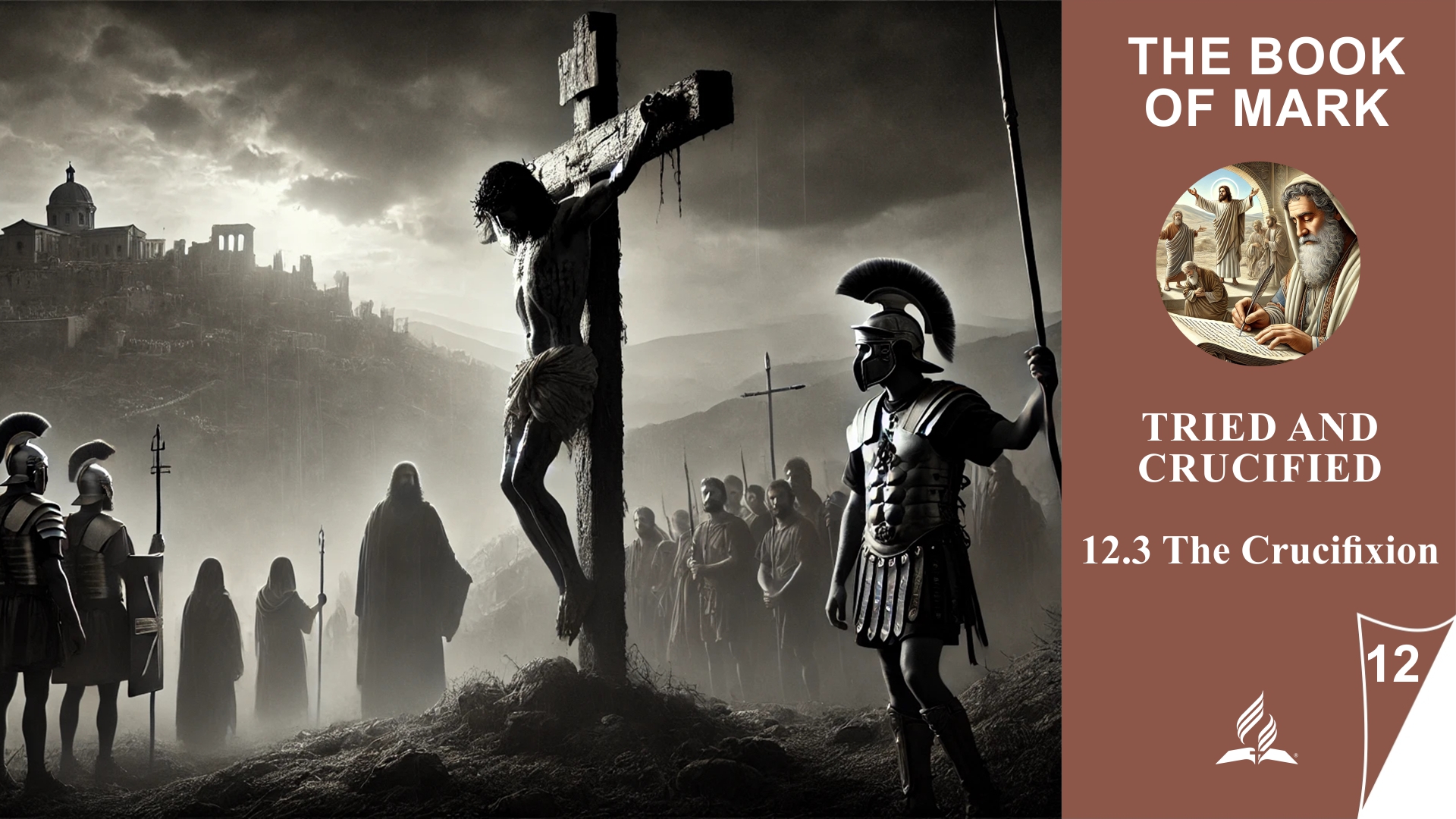

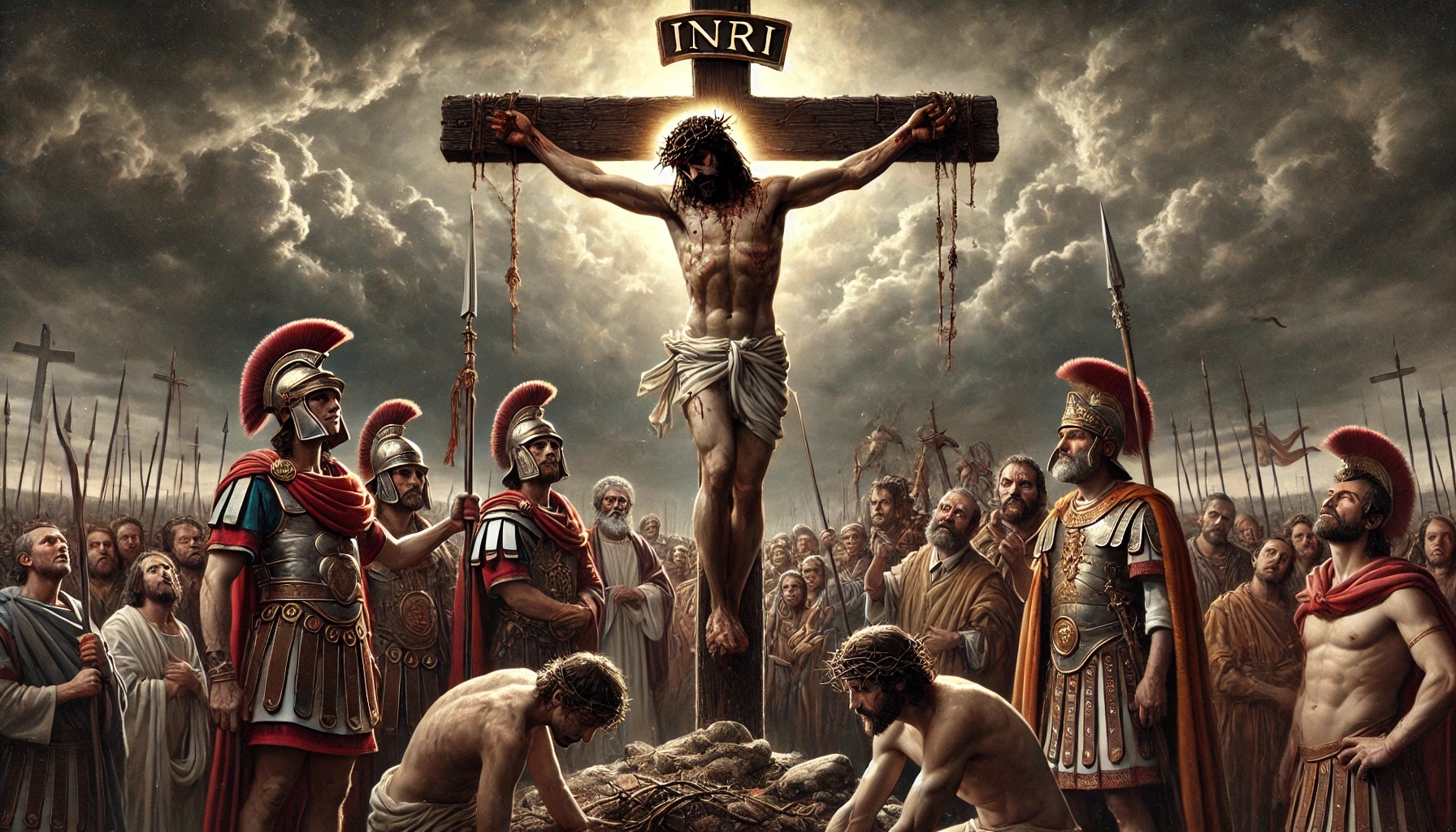
12.3 The Crucifixion
Saving Weakness: The Bitter Irony of Jesus’ Crucifixion
Read Mark 15:21–38. What terrible, painful irony is found in this passage?
In Mark 15:21–38, we find a deep, painful irony that represents the climax of the Passion narrative. The irony lies in the fact that Jesus, the Savior of humanity, appears on the cross as a helpless victim. The religious leaders and soldiers who mock Him point to His apparent inability to save Himself, even though He has saved others (Mark 15:31). However, it is precisely in this seeming helplessness that the true meaning of His sacrifice resides—in not saving Himself, Jesus saves the world.
-
The Deep Irony of Salvation
The statement by the religious leaders, “He has saved others, but he cannot save himself,” is a bitter irony. They acknowledge Jesus’ ability to heal and save people, yet they mock Him because He cannot free Himself from the cross. What they fail to understand is that Jesus’ refusal to save Himself is the core of His mission. His willingness to sacrifice is the key to humanity’s redemption. The true Savior consciously chooses not to save Himself in order to give life to others.
-
Jesus’ Apparent Weakness as the Source of Redemption
Jesus, who was in control up to His arrest, now seems utterly powerless. He is not only mocked but also physically exhausted—so much so that a stranger, Simon of Cyrene, has to carry His cross. Yet this powerlessness is only outward. In reality, Jesus is still sovereign over the events. His conscious decision to bear the cross and not intervene demonstrates His true strength and obedience to the divine will.
-
The Irony of Mockery
The religious leaders use Christological titles like “King,” “Savior,” and “Son of God” to ridicule Jesus. However, these titles, which they use to demean Him, are actually Jesus’ true designations. Unknowingly, they affirm Jesus’ true identity. As they mock Him, they inadvertently reveal the deeper truth of His mission and nature. Jesus is indeed the King and Savior, and the crucifixion is the moment His divine identity becomes most evident.
-
The Mystery of the Cross
Throughout the Gospel, there is a recurring theme of secrecy, where Jesus often keeps His identity as the Messiah hidden. However, at the cross, His identity can no longer be concealed. The crucifixion is the moment when the greatest mystery—the fact that Jesus is the Son of God who saves the world—is unveiled. The apparent defeat of the cross is, in truth, the moment of victory, where Jesus conquers sin and death.
-
Suffering as Part of the Divine Plan
Jesus’ path of suffering and the physical agony He endures on the cross fulfill the prophetic scriptures (cf. Psalm 22). The unimaginable pain He endures—the nails through His wrists, the suffocating sensation when raising His body—is not only a demonstration of human cruelty but also part of the divine plan for redemption. Jesus’ willingness to suffer shows that true love and dedication know no bounds.
Conclusion
The crucifixion of Jesus, as described in Mark 15:21–38, is a profoundly ironic and painful scene. The religious leaders who mock Jesus fail to realize that through His apparent powerlessness on the cross, He brings about the ultimate salvation. The irony lies in the fact that Jesus, who does not save Himself, thereby saves the world. His sacrifice is the key to redemption, and His true royal dignity is revealed through the cross.
Read John 1:1–3 and reflect on what this passage says about Jesus, the same Jesus who is crucified in Mark. How can we intellectually grasp what Christ’s death means for us?
In John 1:1–3, we read:
“In the beginning was the Word, and the Word was with God, and the Word was God. He was with God in the beginning. Through him all things were made; without him nothing was made that has been made.”
This passage reveals the divine nature of Jesus. He is referred to as the “Word” who existed before creation and through whom everything was created. This means that the Jesus who is crucified in Mark is the same Jesus who created the universe. It amazes us at the depth of the mystery of the Incarnation: the Creator of the universe became human and took on suffering and death.
What Does John 1:1–3 Tell Us About Jesus?
-
Jesus is Eternal and Divine:
Jesus is not merely a human or a prophet—He is the eternal “Word” who was with God from the beginning and is God Himself. This emphasizes that Jesus is not only the Savior but also the Creator. In His person, humanity and divinity are united.
-
Jesus is the Creator:
“All things were made through him.” Jesus is the origin and creator of life. This means that the one who hangs on the cross is the very originator of life itself. This gives His crucifixion an even deeper significance—the Creator gives His life for creation to save it.
Intelligently Grasping the Mystery of Christ’s Death
It is difficult to fully comprehend with our intellect what Christ’s death means for us, as it is a profound spiritual truth. However, some thoughts can help us better understand it:
-
God’s Love and Sacrificial Willingness:
Jesus’ death is the ultimate sign of God’s love for us. Knowing that the eternal and all-powerful Creator was willing to sacrifice Himself for His creation allows us to see the immeasurable greatness of this love. This love surpasses our understanding, but we can accept it through faith.
-
The Creator Suffers for His Creation:
The idea that the Creator of the universe suffers on the cross is hard to grasp. However, it shows that God is willing to go to the utmost to save us. Jesus’ death reveals that God identifies with our suffering and takes it upon Himself to deliver us from sin and death.
-
Divine Justice and Grace:
At the cross, we see both God’s justice and His grace. Justice because sin must be atoned for; grace because Jesus bears the punishment in our place. It is a divine paradox: through the death of the innocent, the guilty are redeemed.
-
The Mystery of Faith:
Ultimately, Christ’s death remains a deep mystery that we cannot fully understand, but we are invited to accept it through faith. We recognize that it is more than a historical event—it is the key to redemption and reconciliation with God.
Conclusion
John 1:1–3 reveals to us the divine and eternal nature of Jesus, who is crucified in Mark. It shows us that the one who suffers on the cross is the same through whom the world was created. Christ’s death remains a profound mystery that reveals both God’s love and His justice. Even though we cannot fully comprehend it intellectually, faith invites us to accept it as the central event of our redemption and to understand it in our hearts.
The Connection Between Jesus’ Crucifixion and Our Daily Lives and Faith Lies in Learning True Strength, Love, and Dedication from Jesus’ Example, Even When They Often Appear as Weakness to the World.
-
Strength in Weakness:
In daily life, we often feel powerless when faced with suffering, injustice, or challenges. However, Jesus’ crucifixion shows us that true strength does not lie in external power but in the ability to make sacrifices and be there for others. Jesus’ conscious decision not to save Himself but to give Himself up for humanity reminds us that our apparent weaknesses and sufferings can contribute to bringing love and healing into the world.
-
The Paradox of Redemption:
The irony of the crucifixion—that Jesus saves humanity through His death—reflects many aspects of our faith and lives. We recognize that what appears as defeat or loss can often be the beginning of something greater. When we struggle with difficulties or losses in daily life, we can trust in faith that God is working even in these situations to bring about something good.
-
Self-Sacrifice and Love:
Jesus’ death on the cross is the ultimate expression of God’s love. It shows us that true love is willing to sacrifice itself. This message challenges us to act lovingly and sacrificially in our own lives—whether in our relationships, within the family, or when helping others in need. Jesus’ crucifixion reminds us that even the smallest sacrifice can make a significant difference when done out of love.
-
Justice and Grace in Daily Life:
At the cross, we see the perfect balance between justice and grace. Similarly, in our lives, we are often called to seek this balance—striving for justice while also practicing grace and forgiveness toward others. The crucifixion teaches us that we should not only fight for our rights but also be willing to offer grace and forgiveness, even when it is difficult.
-
Faith in the Unfathomable:
Just as Christ’s death on the cross is difficult for us to fully comprehend, there are often situations in daily life that we cannot fully understand. Faith calls us to trust that God has a greater plan, even when we do not see it immediately. We can learn to respond with patience and trust in God’s guidance, just as Jesus trusted His Father even while hanging on the cross.
Conclusion:
Jesus’ crucifixion and the irony that through His apparent weakness the salvation of the world is made possible teach us that even in our daily lives, apparent weakness can become strength and defeat can turn into victory. Faith in the crucified and risen Jesus challenges us to trust in God’s plan, to sacrifice ourselves in love, and to hope for justice and grace even in difficult moments.

True strength is not shown in saving oneself but in making the sacrifice that saves others.
Visited 90 times, 1 visit(s) today

